Waterproof Zipper Bags: The Ultimate Protection Guide
Waterproof zipper bags (completely sealed bags with zippers, designed to prevent water from entering) are an essential item for a wide range of people. Whether someone is an avid traveler, an outdoor enthusiast, someone running errands, or even a small business owner, these bags offer a simple yet effective solution to a common problem: protecting valuable belongings from potential damage.
Consider the stress of ruined clothing and damaged electronics for travelers. Imagine wet gear and compromised supplies ruining an outdoor adventure. For the average person, damaged documents or messy spills can disrupt a day. Small businesses face the risk of damaged inventory, leading to significant financial setbacks. These scenarios highlight the everyday anxieties that many people face regarding the safety of their possessions.
Through this article, readers will gain a comprehensive understanding of waterproof zipper bags. This information will enable them, use, and care for these bags, ensuring the long-term protection of their items. This article is more than a guide, it is a way for readers to improve their quality of life.
1. Why choose waterproof zipper bags? The benefits explained
Waterproof zipper bags are far more than just simple storage solutions. They offer a range of significant advantages that set them apart. This article delves into the specific benefits, from unparalleled water protection to enhanced organization and leakproof convenience, to help people understand the true value.
1.1 Protection from water damage
Waterproof zipper bags provide a crucial barrier against moisture, effectively safeguarding belongings from potential water damage. However, it’s important to understand the distinctions within the terminology. “Water-resistant” bags can handle light splashes or brief exposure to rain, but they are not designed for submersion.
“Waterproof” bags, on the other hand, offer a much higher level of protection, creating a watertight seal that prevents water from entering even when briefly submerged. For the ultimate protection, “submersible” bags, often rated with an IP (Ingress Protection) code like IP67 or IPX8, are designed to withstand prolonged submersion at specific depths. For example, a bag with an IP67 rating can be submerged in up to 1 meter of water for 30 minutes.
Consider electronic devices, important documents, or delicate clothing during heavy rain. A truly waterproof bag provides the confidence that these items will remain dry and functional.
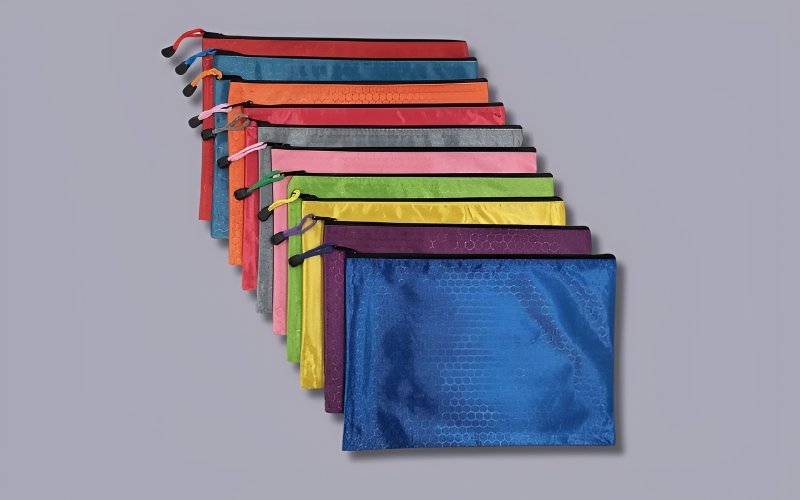
1.2 Dust and debris protection
Beyond water, the airtight seal (completely closed, preventing air from entering or escaping) characteristic of many waterproof zipper bags provides a significant defense against dust, sand, and dirt. This is particularly valuable for outdoor activities and long-term storage.
Imagine a day at the beach where fine sand particles can easily infiltrate ordinary bags, potentially damaging electronics or delicate items. Or consider storing seasonal clothing or important documents in an attic or basement where dust accumulation is a concern. The airtight seal keeps contents clean and protected, prolonging their lifespan and maintaining their condition.
1.3 Organization and convenience
Waterproof zipper bags are excellent tools for achieving better organization in various aspects of life. Their transparent or semi-transparent designs often allow for easy identification of contents, eliminating the need to rummage through multiple bags.
For travel, these bags can streamline packing by separating toiletries, electronics, and clothing, making it easier to locate items and comply with airline regulations. At home, they can be used to neatly store seasonal clothing, craft supplies, or important documents, creating a more organized and clutter-free environment. The convenience of quickly finding what is needed, without unnecessary hassle, is a significant benefit.
1.4 Leakproof containment
While protecting belongings from external elements is a primary function, waterproof zipper bags also excel at preventing leaks from within. This is particularly important for travel, where toiletries like shampoo, lotion, or other liquids can easily spill and damage surrounding items.
A high-quality waterproof zipper bag provides a secure, leakproof (preventing any liquid from escaping) environment for these items, offering peace of mind and protecting other belongings within a suitcase or bag. The containment of potential messes not only prevents damage but also simplifies travel and reduces stress.
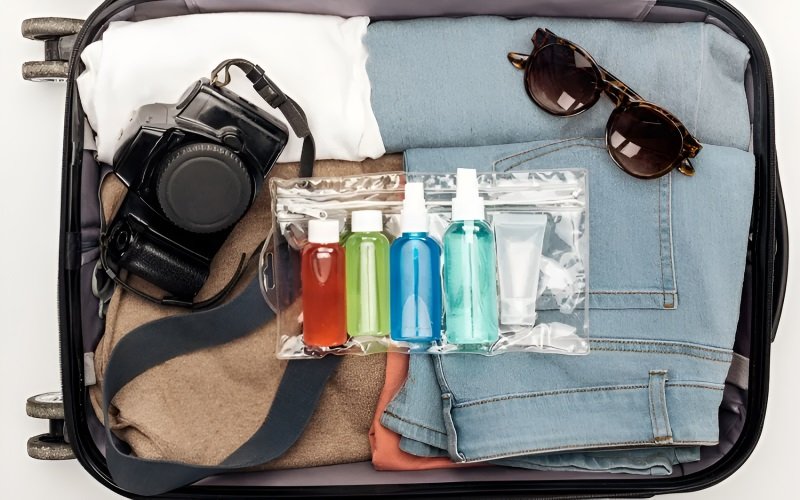
1.5 Versatility and multiple uses:
The applications of waterproof zipper bags extend far beyond basic storage. They are highly versatile tools with a wide range of uses:
- Travel: Protecting toiletries, electronics, and documents; complying with TSA regulations.
- Outdoor Activities: Safeguarding gear, food, and first-aid supplies during camping, hiking, boating, or fishing.
- Everyday Storage: Organizing documents, photos, and small items at home or in the office.
- Electronics Protection: Shielding phones, tablets, and cameras from moisture and dust.
- Food Storage: Keeping snacks and meals fresh and protected from the elements.
- First-Aid Kits: Maintaining the sterility and dryness of medical supplies.
- Clothes storage: Preventing mold, insects affecting clothes.
This broad range of applications makes waterproof zipper bags an indispensable item for various lifestyles and needs.
2. Understanding waterproof zipper bag features
To fully appreciate the protective capabilities of waterproof zipper bags, it’s crucial to understand the key features that contribute to their effectiveness. From the materials used to the construction of the zipper and seams, each element plays a vital role in ensuring waterproofness and overall functionality. This information is what distinguishes a reliable bag from one that might fail under pressure.
2.1. Waterproof materials
The choice of material is fundamental to a waterproof zipper bag’s performance. Several common materials offer varying degrees of protection and durability:
- TPU (Thermoplastic Polyurethane): TPU is a versatile material known for its excellent balance of flexibility, durability, and waterproofness. It’s also resistant to abrasions and tears, making it a popular choice for bags that need to withstand rugged use. TPU is often used in clear or translucent bags, allowing for easy visibility of contents. PVC (Polyvinyl Chloride): PVC is another common material known for its high waterproofness and durability. It’s generally less flexible than TPU and can be more prone to cracking in cold temperatures. PVC is often used in heavier-duty bags and can be either clear or opaque.
- Coated Nylon: Nylon itself is not inherently waterproof, but when coated with a waterproof material like polyurethane (PU) or silicone, it becomes highly water-resistant. Coated nylon is lightweight and flexible, making it suitable for packable bags. However, the coating’s durability can vary, and it may be more susceptible to wear and tear over time. Material Thickness: The thickness of the material, often measured in mils (thousandths of an inch) or denier (a unit of yarn density), also plays a crucial role in durability. Thicker materials generally offer greater puncture and abrasion resistance.
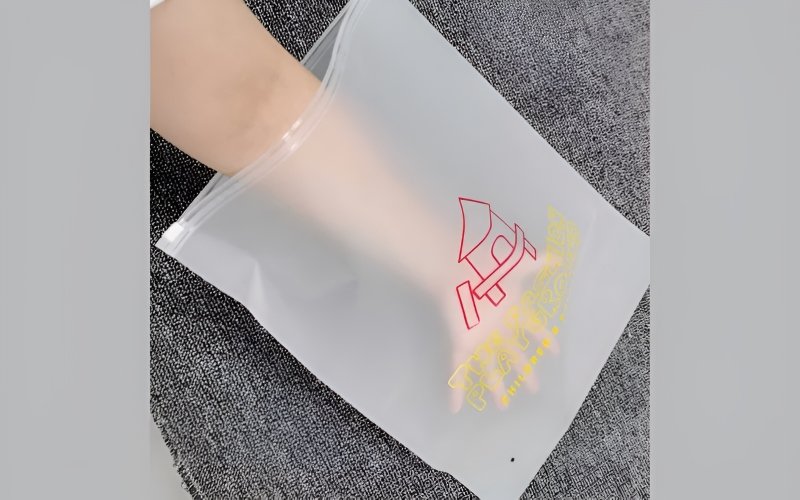
Here’s a table summarizing the key differences:
| Material | Durability | Flexibility | Waterproofness | Cost | Transparency |
|---|---|---|---|---|---|
| TPU | High | High | High | Moderate | Often Clear |
| PVC | High | Low | High | Low | Clear/Opaque |
| Coated Nylon | Moderate | High | High | Moderate | Opaque |
2.2. Waterproof zippers:
The zipper bag is often the weakest point in a waterproof bag, so its design and construction are critical. Standard zippers, commonly found on everyday clothing and bags, are not designed to be waterproof. They have gaps between the teeth and the slider that allow water to penetrate.
Waterproof zippers, on the other hand, are specifically engineered to create a watertight seal. There are several types, including:
- TRU Zip: This is a patented toothless zipper design that uses a unique extrusion process to create a completely waterproof and dustproof seal. It’s known for its smooth gliding action and reliable closure.
- YKK Aquaguard: This is a coil zipper with a water-repellent polyurethane coating. While not fully submersible, it offers excellent water resistance for splashes and rain.
The key difference lies in the sealing mechanism. Waterproof zippers either use overlapping elements or a tight, interlocking design to prevent water from passing through.
2.3. Seam construction:
Even the most waterproof material and zipper are useless if the seams (the joints where pieces of fabric are joined) of the bag are not properly sealed. Standard sewn seams create tiny holes that can allow water to seep through. Waterproof bags utilize two primary methods to create watertight seams:
- Welded Seams: This process uses heat and pressure to fuse the material together, creating a permanent, airtight, and watertight bond. Radiofrequency (RF) welding is a common type of welding used in waterproof bag manufacturing. It uses high-frequency electromagnetic energy to generate heat and create a strong, consistent weld.
- Taped Seams: This method involves applying a waterproof tape over the sewn seam to cover the needle holes and create a barrier against water. While taped seams can be effective, they are generally less durable than welded seams and may be more prone to peeling or cracking over time.
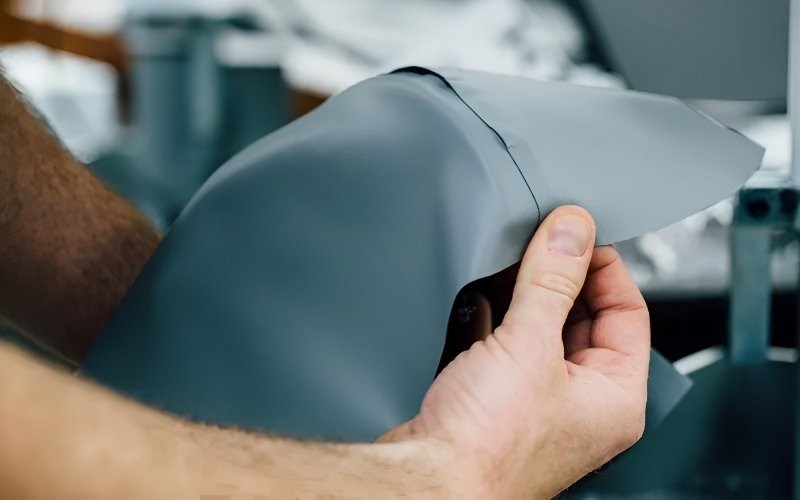
2.4. Size and capacity
Waterproof zipper bags come in a wide range of sizes and capacities to accommodate different needs. From small pouches for storing electronics or toiletries to large bags for packing clothing or gear, choosing the right size is essential.
- Small: Ideal for phones, wallets, keys, and small toiletries.
- Medium: Suitable for tablets, cameras, larger toiletries, and snacks.
- Large: Designed for clothing, towels, and larger gear.
Some bags also feature a gusseted bottom, which means they have a flat base that expands to provide additional capacity and allow the bag to stand upright.
2.5. Other features to consider
Beyond the core waterproof features, several other factors can enhance a bag’s usability and convenience:
- Transparency: Clear or translucent bags allow you to easily see the contents without opening the bag, saving time and effort. Opaque bags offer privacy but may require labeling or organization systems.
- Attachment Loops: These loops or D-rings allow you to attach the bag to a backpack, kayak, or other gear, keeping it secure and accessible.
- Durability: Consider the overall construction and material thickness to ensure the bag can withstand the intended use and potential wear and tear. Puncture resistance is particularly important for outdoor use.
- Ease of Use: A smooth-gliding zipper and easy-to-open design are crucial for quick access to contents. Ensuring the zipper has a good air-tight
3. Choosing the right waterproof zipper bag for your needs
Selecting the appropriate waterproof zipper bag requires careful consideration of intended usage. The ideal bag for a traveler will differ significantly from one designed for rugged outdoor use or everyday storage. This section offers tailored recommendations based on specific needs, ensuring that people choose a bag that effectively protects items and provides optimal convenience.
3.1. Travel
Air travel presents unique challenges for protecting belongings, particularly with regulations regarding liquids. The Transportation Security Administration (TSA) enforces the 3-1-1 rule for carry-on luggage: liquids, gels, aerosols, creams, and pastes must be in containers of 3.4 ounces (100 milliliters) or less, and all containers must fit into a single, quart-sized, clear, resealable bag.
For toiletries, a clear, quart-sized waterproof zipper bag that complies with the TSA 3-1-1 rule is essential. This allows for easy inspection by security personnel and prevents leaks from damaging other items in luggage. For electronics and other valuables, larger waterproof bags provide an extra layer of protection against spills, rain, or accidental submersion during travel.
Packing Tips:
- Use smaller bags to separate toiletries, electronics, and other items within luggage.
- Consider a slightly larger bag for checked luggage to protect clothing from potential spills.
- Pack essential electronics and medications in a waterproof bag within carry-on luggage for added security.
3.2. Outdoor activities
Outdoor adventures demand a higher level of protection due to exposure to the elements. The specific type of bag needed will depend on the activity:
- Camping/Hiking: Durability and a high waterproof rating (IP67 or IPX8) are crucial for protecting gear from rain, mud, and potential submersion in streams or puddles. Bags with attachment loops are useful for securing them to backpacks.
- Boating/Water Sports: Submersible bags with a high IP rating are essential for keeping electronics, documents, and other valuables dry, even if they fall overboard. Consider bright colors for visibility in the water.
- Fishing: Waterproof bags can protect tackle boxes, electronics, and personal items from splashes and rain.

3.3. Everyday storage
For home or work organization, waterproof zipper bags offer a versatile solution for protecting various items:
- Documents: Clear bags are ideal for storing important documents, photos, and other papers, protecting them from dust, moisture, and potential spills.
- Electronics: Small waterproof bags can safeguard phones, tablets, and chargers from accidental spills or dust accumulation.
- Home/Work Organization: Use different sized bags to organize craft supplies, office supplies, or small household items, keeping them protected and easily accessible. Clear bags provide visibility, while opaque bags offer privacy.
3.4. For clothes storage
Waterproof zipper bags offer a significant advantage for storing garments, protecting expensive items.
- Prevent Mold and Mildew: In humid environments, moisture can easily lead to mold and mildew growth on clothing, causing unpleasant odors and potential damage. Waterproof bags create a barrier against moisture, preventing these issues.
- Insect Protection: Clothes moths, carpet beetles, and other insects can infest stored clothing, causing damage to fabrics. A sealed waterproof bag prevents these pests from accessing garments.
- Dust and Dirt Protection: Even in clean environments, dust and dirt can accumulate on stored clothing over time. Waterproof bags keep clothes clean and fresh.
4. How to use and maintain your waterproof zipper bag
While waterproof zipper bags are designed for durability and protection, proper use and maintenance are essential to maximize their lifespan and ensure their continued effectiveness. Simple steps, from correctly closing the zipper to cleaning and storing the bag, can significantly impact its long-term performance.
4.1. Proper closure
The most crucial step in using a waterproof zipper bag is ensuring it’s properly closed. Even a small gap in the seal can compromise its waterproofness.
Step-by-Step Instructions:
- Align the Zipper: Make sure the two sides of the zipper are properly aligned before starting to close it.
- Slow and Steady: Slide the zipper slowly and steadily along the track. Avoid rushing, as this can cause the zipper to snag or misalign.
- Full Closure: Ensure the zipper is fully closed all the way to the end. Many waterproof zippers have a designated end-stop or locking mechanism. Pull firmly to ensure the zipper is completely sealed.
- Visual check: Check to ensure that the two sides of the bag have been completely sealed
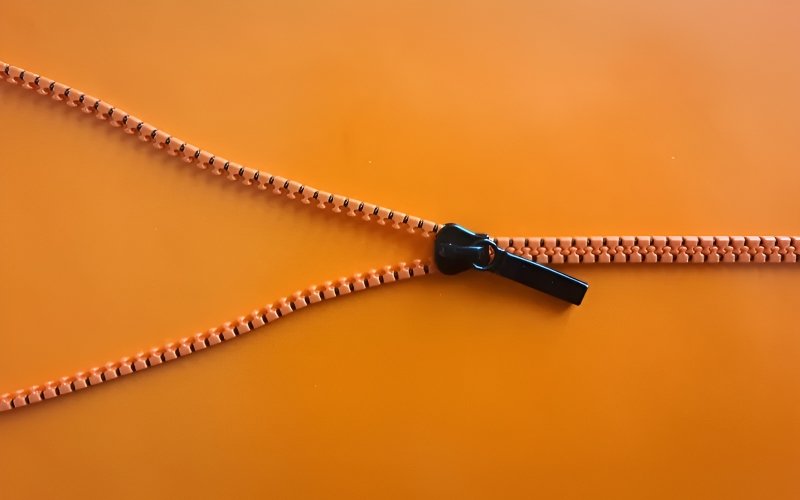
4.2. Cleaning and care
Regular cleaning is important to remove dirt, debris, and any residue that could affect the bag’s performance or the integrity of the zipper.
Instructions:
- Empty the Bag: Remove all contents before cleaning.
- Mild Soap and Water: Use mild soap (like dish soap) and lukewarm water. Avoid harsh chemicals or abrasive cleaners, as these can damage the material or the zipper.
- Gentle Scrubbing: Use a soft cloth or sponge to gently scrub the interior and exterior of the bag.
- Rinse Thoroughly: Rinse the bag thoroughly with clean water to remove all soap residue.
- Air Dry: Allow the bag to air dry completely before storing it. Ensure the bag is fully open and turned inside out, if possible, to allow for proper airflow. Avoid direct sunlight or high heat, as these can damage the material.
Material-Specific Care:
- TPU: Generally easy to clean with soap and water.
- PVC: May require occasional conditioning with a PVC cleaner to prevent cracking.
- Coated Nylon: Avoid harsh chemicals and excessive scrubbing, as this can damage the waterproof coating.
4.3. Storage
Proper storage helps prevent damage and prolongs the life of waterproof zipper bags.
Recommendations:
- Flat or Rolled: Store bags flat or loosely rolled to avoid creases or folds that could weaken the material or damage the zipper.
- Avoid Direct Sunlight: Prolonged exposure to direct sunlight can degrade the material and affect the zipper’s performance.
- Moderate Temperatures: Avoid storing bags in extreme temperatures (very hot or very cold), as this can affect the material’s flexibility and durability.
- Clean the bags before storing
4.4. Zipper maintenance
The zipper is a critical component, and proper maintenance ensures its smooth operation and long-term waterproofness.
Lubrication:
- When: Lubricate the zipper periodically, especially if it feels stiff or difficult to close. Also, lubricate before long-term storage.
- How: Use a zipper lubricant specifically designed for waterproof zippers. Some manufacturers, like TRU Zip, offer their own lubricant. Apply a small amount of lubricant along the zipper track and slide the zipper back and forth to distribute it evenly.
- Recommended Lubricants: Avoid using oil-based lubricants, as these can attract dirt and debris. Stick to silicone-based or water-based lubricants.
4.5. Testing for waterproofness
It’s a good practice to periodically test waterproof zipper bags, especially before using them to protect valuable items.
Submersion Test:
- Seal the Bag: Close the zipper completely, ensuring it’s properly sealed.
- Submerge: Submerge the bag in a container of water (like a sink or bathtub).
- Check for Bubbles: Observe for any air bubbles escaping from the bag. If bubbles appear, it indicates a leak.
- Duration: Hold the bag underwater for a short period (e.g., 30 seconds).
- Dry and Inspect: Check inside.
If a Leak is Found:
- Identify the Source: Try to pinpoint the location of the leak (zipper, seam, or puncture).
- Minor Punctures: Small punctures can sometimes be repaired with a waterproof patch kit designed for the specific material.
- Zipper or Seam Issues: If the leak is due to a faulty zipper or seam, it may be necessary to replace the bag. Contact the manufacturer for warranty information.
5. Related questions
5.1 Can waterproof zipper bags be used for food storage?
Yes, many waterproof zipper bags are suitable for food storage. Look for bags made from food-grade materials (like TPU) that are free of BPA and other harmful chemicals. They can keep snacks, sandwiches, and other food items fresh and protected from the elements, making them ideal for picnics, hikes, or everyday lunches.
5.2 How do I know if a waterproof zipper bag is truly waterproof?
Look for bags with a specific waterproof rating, such as IP67 or IPX8. These ratings indicate the level of protection against water ingress. Also, check for features like welded seams and a waterproof zipper (e.g., TRU Zip). Performing a submersion test (as described in section 4.5) before using the bag with valuable items is a good way to confirm its waterproofness.
5.3 How to choose the right size for clothes?
To choose the right size of waterproof zipper bag for clothes, first categorize the clothes you intend to store: small items (underwear, socks), medium items (T-shirts, dresses), or large items (coats, blankets). Then, estimate the volume needed for each category, remembering that compression can reduce the space required. Refer to the manufacturer’s size chart, which typically lists dimensions and suggested uses.
Read more:
Waterproof zipper bags offer a versatile and effective solution for protecting belongings from water damage, dust, dirt, and other environmental hazards. From travelers safeguarding electronics and documents to outdoor enthusiasts protecting gear and clothing, the applications are extensive. Beyond their core function of protection, these bags also enhance organization, provide leakproof containment, and offer convenience in various aspects of life.
Choosing the right waterproof zipper bag involves understanding the key features, such as waterproof materials (TPU, PVC, coated nylon), waterproof zippers (TRU Zip, YKK Aquaguard), and seam construction (welded, taped). Selecting a bag that aligns with intended use is crucial, whether traveling, engaging in outdoor activities, or organizing items for everyday storage.
Proper use and maintenance, including correct closure, cleaning, and storage, are essential to maximize the bag’s lifespan and ensure its continued effectiveness. Periodic testing for waterproofness is a proactive step to avoid potential damage to valuable items. For expert advice and a wide selection of high-quality waterproof zipper bags, consider visiting a reputable supplier specializing in protective packaging solutions.






















